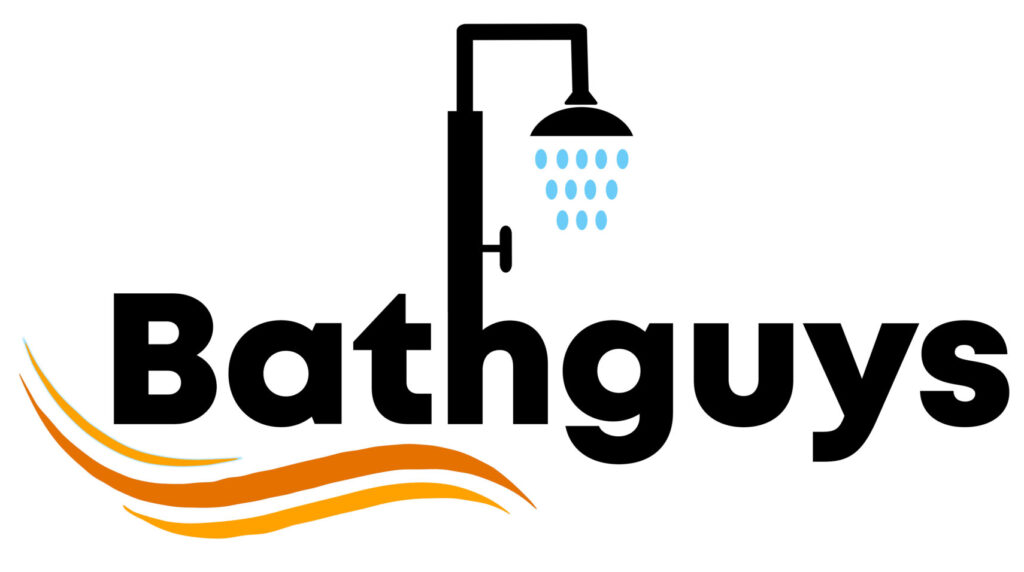Have you ever noticed small patches of mould or peeling paint in your bathroom and wondered what’s going on? Moisture damage creeps in quietly — from steamy showers, dripping faucets or poor ventilation — and before you know it your bathroom starts to show its age. In Toronto and the GTA where cold winters and warm showers create extra condensation these problems are even more common.
In this guide we’ll show you how to prevent moisture damage in your bathroom with simple steps anyone can follow. You’ll learn how to spot the early warning signs, reduce humidity and choose the right materials to keep your bathroom dry and healthy. Whether you’re a homeowner looking to avoid costly repairs or planning a future renovation BathGuys has the expert advice you need to keep your bathroom beautiful and protected for years to come.
Table of Contents
What Is Bathroom Moisture Damage & Why It Matters
Moisture damage happens when water or humidity gets in where it shouldn’t — behind walls, under floors or around fixtures. Over time that trapped moisture can weaken materials, cause mould or mildew and create stinky smells. Common signs of moisture damage in a bathroom are peeling paint, soft or swollen drywall, loose tiles or dark spots on ceilings. Even small leaks or condensation left unchecked can become bigger structural problems down the road.
Understanding why it matters is key to bathroom moisture damage prevention. Excess water can rot wood framing, damage subfloors and spread mould spores that affect indoor air quality. In homes around Toronto and the GTA these issues are worse because of our cold winters — when warm, humid air from showers meets cold surfaces, condensation forms fast. Repairing water damage is expensive but preventing it is easy with good ventilation, proper materials and regular maintenance. When you protect your bathroom from moisture damage you’re not only keeping it looking fresh but also your home’s structure, value and your family’s health.
Bathroom Moisture Damage happens when water or humidity builds up in areas that aren’t sealed or ventilated. Over time this hidden moisture can weaken materials, create mould and lead to costly repairs. Here’s what every homeowner should know:
Common Signs of Bathroom Moisture Damage
- Peeling or bubbling paint on walls and ceilings
- Soft, swollen or discoloured drywall
- Loose or cracked tiles around the shower or tub
- Musty smells or visible mould and mildew
- Water stains or dark patches on ceilings and corners
These warning signs mean it’s time to take action before the damage spreads deeper into your walls or flooring.
Why Moisture Damage Matters
- Structural Risk: Continuous water exposure can rot wood, weaken subfloors and damage framing.
- Health Concerns: Mould and mildew can trigger allergies, asthma and other respiratory issues.
- Costly Repairs: Ignoring early signs often leads to expensive renovations later.
- Home Value: A damp damaged bathroom can reduce your property’s resale value.
For homeowners in Toronto and the GTA moisture problems are especially common due to cold winters and condensation forming on walls and windows. By taking simple preventative measures — like improving ventilation and using moisture resistant materials — you can protect bathroom from moisture damage, keep it beautiful, healthy and durable for years to come.
Top Causes of Bathroom Moisture Damage
So you know what causes moisture damage? Now you can prevent it. Bathrooms deal with humidity, warm air and splashing water – a perfect storm for mould, mildew and structural damage if left unchecked. By knowing the main culprits you can take simple steps to protect your bathroom from moisture damage before it becomes a costly repair.

1. Poor Ventilation
One of the biggest causes of bathroom moisture problems is poor airflow. Without a strong exhaust fan or an open window, steam from showers lingers in the air and settles on walls, ceilings and mirrors. Over time this trapped humidity leads to mould growth, peeling paint and musty odours. A properly sized exhaust fan that runs during and after showers can make a big difference in reducing bathroom humidity.
2. Hidden Leaks
Small leaks often go unnoticed but can cause big water damage. Dripping pipes under the sink, a loose toilet seal or cracked grout around the tub can allow water to seep into walls and floors. Even a tiny drip adds up over time to soft drywall, warped flooring and mould growth behind the surface. Check for leaks regularly and avoid long term moisture issues.
3. Inadequate Waterproofing
Not all bathroom surfaces are created equal. If your shower walls or floors weren’t properly sealed during installation water can seep through tile joints and into the layers beneath. Using non-waterproof drywall or skipping a waterproof membrane behind tiles is a common mistake in older bathrooms. Proper waterproofing during renovation is one of the best ways to prevent bathroom water damage.
4. Condensation and Temperature Changes
In Toronto’s cold winters warm indoor air meets cold bathroom walls and creates condensation. This moisture collects on mirrors, windows and corners where mould can grow. Keep your bathroom slightly warmer and ensure steady ventilation and you’ll reduce condensation and protect walls from dampness.
5. Lack of Regular Maintenance
Even the best built bathroom needs simple care to stay in good shape. Failing to re-seal grout, replace old caulking or clean ventilation fans can let moisture sneak in over time. A few quick maintenance checks every few months will go a long way to preventing bigger issues later.
How to Assess If Your Bathroom Has Moisture Damage
Before you can protect your bathroom from water damage, you need to know if it’s already happening. Moisture issues start small and hide, so learning to spot early signs will save you from costly repairs later on.
1. Look for Visible Warning Signs
First check the most common areas where moisture collects — around showers, tubs and sinks. Signs of water damage may be:
- Peeling or bubbling paint on walls or ceilings
- Warped or soft flooring near the tub or toilet
- Cracked or missing grout and caulking around tiles
- Dark spots, mould or mildew on walls and corners
- A musty or damp smell that won’t go away
2. Test for Hidden Leaks or Humidity Issues
Not all water damage is visible. Run a quick check under the sink, behind the toilet and around the baseboards for dampness. Touch the walls near the shower or tub — if they feel soft or cold to the touch, there’s moisture trapped inside. You can also use a cheap moisture meter or humidity gauge to find problem areas before they become big.
3. Watch for Changes Over Time
Water damage develops slowly. Keep an eye on recurring condensation on mirrors or windows, discoloured paint or small patches of mould that come back after cleaning. These are signs humidity levels are too high or your bathroom’s waterproofing is failing.
4. When to Call a Professional
If you suspect hidden leaks, structural damage or ongoing mould growth, it’s time to call a professional bathroom renovator. Experts like BathGuys can inspect behind walls, check plumbing lines and find exactly where moisture is getting in. Fixing these issues early will keep your bathroom safe, dry and durable for years.
How to Protect Bathroom from Moisture Damage – Preventive Strategies
Moisture damage can be prevented with a few smart habits and upgrades. Here are the most effective ways to protect bathroom from moisture damage and keep it in great shape year-round.
Here are some Dead-easy ways to stop moisture damage ruining your bathroom once and for all:
1. Get the Air Flowing and Control Humidity
Good airflow in your bathroom is the key to keeping excess moisture at bay. Make sure you’ve got a fan that matches the size of your bathroom – preferably one that runs for at least 15 to 20 minutes after every shower. And if you’re lucky enough to have a window in your bathroom, open it up for a minute or two to let some fresh air in and that nasty steam out. In the depths of winter, when it’s freezing outside, we’ve found that using a fan with a built-in humidity sensor or a compact dehumidifier really helps to keep things nice and balanced in there, and prevents that pesky mould from taking hold.
2. Use Materials That Can Take a Bath
Choosing the right materials for your bathroom is a pretty big deal when it comes to stopping moisture damage for good. You should be using water-resistant drywall (also known as green board), sealed grout, and waterproof paint that’s designed for areas that get really steamy. And for the flooring, porcelain tiles, vinyl planks or natural stone that’s properly sealed are all great options – they keep the water from seeping in and causing damage to the surfaces underneath.
3. Keep an Eye on Leaks and Fixtures
Even the tiniest leak can turn into a major problem if you don’t catch it early on. Take a look at the caulking and grout around your tub, shower and sink at least once a year, and replace any bits that are cracked or peeling – that’ll keep the water from getting in and damaging the walls or subfloor. And don’t forget to tighten up any loose fixtures and check under the sink for any hidden drips – early detection is key to saving you from a costly repair down the line.
4. Wipe Down After Showers
We all know that condensation is a major source of hidden moisture damage – so here’s the deal. After a hot shower, take a minute to wipe down the mirrors, tiles and glass doors with a squeegee or a towel. And keep the door slightly open to let that steam out, and run the fan for a few minutes to get rid of the leftover humidity. And in the depths of winter, when the cold air meets the warm steam, this little trick really helps prevent water from building up on the cold surfaces.
5. Keep Your Bathroom in Good Shape
A well-maintained bathroom just lasts longer, and it resists moisture damage way better. So make sure to clean and reseal the grout every couple of years, keep the vents clear of dust and ensure the drains are working properly. And don’t leave wet towels or bath mats lying around for ages – they add to the humidity. A bit of regular TLC makes a huge difference in preventing moisture damage before it even starts.
6. Think About a Renovation
If your bathroom is getting on in years or is showing signs of dampness time and time again, it might be time to get a professional in to give it a makeover. Modern waterproofing systems, improved ventilation, and moisture-resistant finishes can give your bathroom a whole new lease of life – and keep it protected from water and moisture damage.
Also Read: https://bathguys.ca/smart-storage-and-organization-tips-for-small-bathrooms-in-toronto/
Conclusion
Don’t just keep your bathroom clean, protect your home. Protect your structure, health and value. Improve ventilation, use moisture resistant materials and stay on top of maintenance and you’ll prevent mould, leaks and costly repairs. Homeowners in Toronto and the GTA have unique humidity and temperature challenges so being proactive makes all the difference. If your bathroom is showing signs of wear or persistent dampness consider a professional renovation for long term bathroom moisture damage prevention. With BathGuys your bathroom will stay dry, durable and beautiful for years to come.
Frequently Asked Questions
-
What causes the most bathroom moisture damage?
The biggest culprits are poor ventilation, hidden leaks, and improper waterproofing. When warm, humid air can’t escape, it leads to condensation that damages walls, ceilings, and floors. Fixing these issues early helps protect your bathroom from moisture damage before it spreads.
-
How can I reduce humidity in my bathroom naturally?
Open a window or keep the exhaust fan running for at least 15–20 minutes after every shower. Wiping down wet surfaces and hanging towels outside the bathroom also helps. These small habits greatly reduce humidity and prevent mould growth.
-
How often should I reseal grout or caulking?
Inspect grout and caulking at least once a year. Replace or reseal any cracked or peeling areas to stop water from seeping behind tiles or fixtures. This simple routine maintenance is key for long-term bathroom moisture protection.
-
What materials are best for moisture-resistant bathrooms?
Use water-resistant drywall (green board), waterproof paint, sealed grout, and porcelain or vinyl flooring. These materials prevent water absorption, helping you maintain a durable and mould-free bathroom.
-
When should I consider a full bathroom renovation?
If you notice repeated leaks, mould spots, or musty smells, it’s time to consider a renovation. A modern remodel with proper waterproofing, ventilation, and durable finishes ensures lasting bathroom moisture damage prevention — especially for older homes in Toronto and the GTA.





